
At Lexmark, we want to help our users be more productive. We are therefore committed to developing technologies that work to eliminate physical barriers to workplace success, making common tasks like printing or scanning a document accessible to everyone. We incorporate features that make our products1 more intuitive, less physically demanding and easier to use for people of all abilities. Designing for accessibility not only helps individuals with physical limitations be fully productive and successful in their careers but also helps address the broader issue of unemployment in the disabled community.
Accessibility innovation at Lexmark is driven by a cross-functional team (CFT) of product designers, software engineers, usability and accessibility experts, solutions designers and publication writers. To determine the best path for future generations of Lexmark products, the CFT monitors legislation and regulations, conducts research with customers and users, and consults with accessibility experts.
Equipped with data from various perspectives, the CFT works with the Lexmark development community to drive product design enhancements in current and future products, making them more accessible for all Lexmark solutions users. By applying the principles of universal design to our solutions, the Accessibility CFT helps deliver accessible imaging devices and assistive software solutions so that all Lexmark customers can make the most of their unique skills and abilities in the workplace.

Lexmark incorporates features that make our products easier to use for people of all abilities. Discover the accessibility features included in many Lexmark products.

On-device guidance
Large high-contrast icons, focus cursor and voice prompts guide users to perform common tasks using swipe navigation.

Adjustable display
Users can tilt the display to optimize the viewing angle.
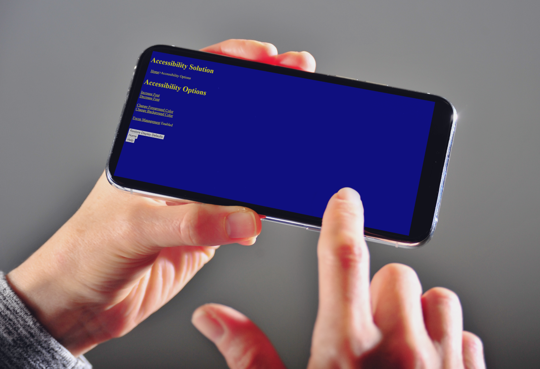
Lexmark Accessibility Solution
Users can create job tickets with their computer or smartphone while using assistive technology, such as the JAWS® screen reader. When they enter a shortcut on the printer’s accessible numpad, their job is released.
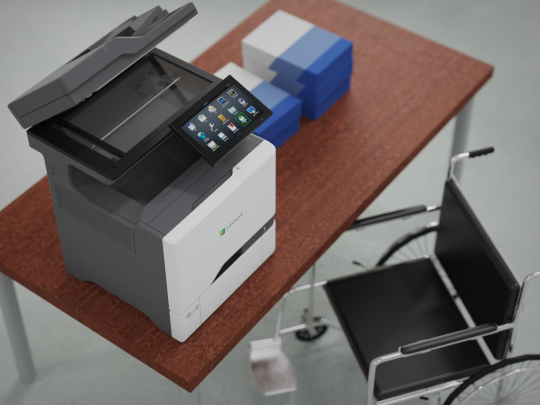
Accessible height and reach
Applying universal design principles helps accommodate the height, reach and force needs of all users.
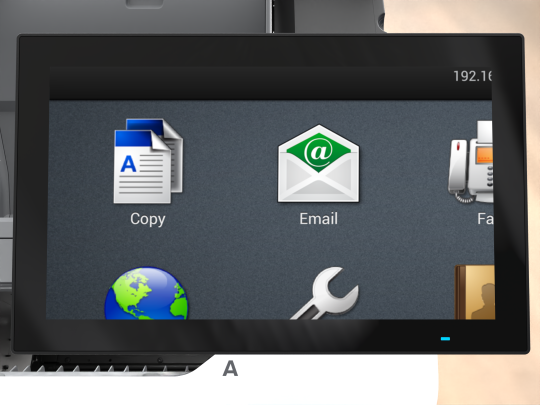
Magnification
Users with limited vision can magnify the user interface display by 200%.
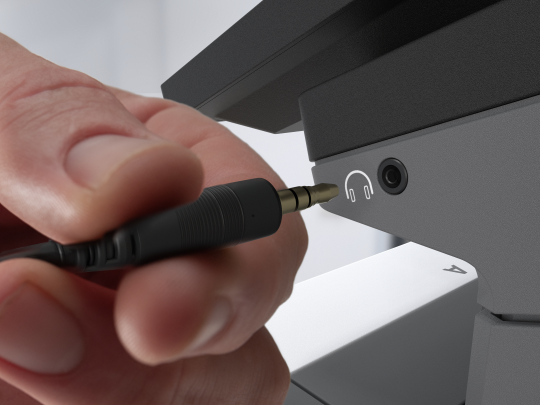
Headphone jack and volume controls
Workers can listen privately to voice prompts using the headphone jack.

Lexmark Embedded Solutions Framework (eSF) Application Platform
A variety of solutions are supported by voice guidance, including Scan to Network, Print Release and Forms and Favorites.
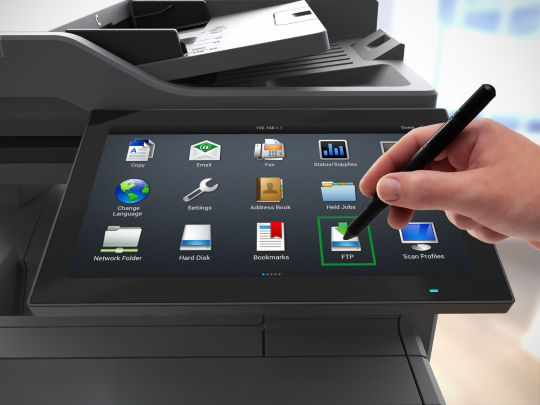
Multiple interaction options
Users can activate the touch screen with a variety of choices, including a stylus or finger.
Lexmark web page designs are guided by Web Content Accessibility Guidelines (WCAG). Lexmark uses elements of these guidelines to create web pages that are more accessible to visitors with differing abilities.
Compatibility with assistive technology
Lexmark includes design features that improve website accessibility for visitors who use screen-reader and screen-magnifier software, such as alternative text for images and graphs, list-oriented navigation and header tags.
Lexmark strives to create a positive experience for all users, regardless of the device used to access our site. For this reason, our site has been designed to ensure that all devices provide a similar user experience. We aim to make visiting our site a productive experience for all individuals.
To ensure that our products are as screen-reader friendly as other Internet-enabled devices, designs for our new web-based applications are informed by WAI-ARIA guidelines and attributes. In addition, we are working to make sure that our applications are available to visitors who may have disabled JavaScript.
Web-based accessibility guides
To aid our customers, we publish our product User's Guides in accessible HTML format. We also publish our product Accessibility Guide providing important product accessibility information in a consolidated, accessible document. In addition, customers with disabilities can access Technical Support via phone, chat and email. For questions regarding Lexmark accessibility solutions, please contact accessibility@lexmark.com.
User input
The Lexmark Accessibility CFT seeks input from customers with disabilities to better understand their unique requirements. We visit our customers to discuss how our printing and software solutions can increase productivity in the workplace. We also meet with them to see how they currently use Lexmark solutions and to hear their ideas and suggestions for future solutions applications. User input helps us optimize our accessibility solutions for continued effectiveness in the workplace.
Standards and regulations
We are guided by current and developing standards and regulations that prescribe best practices in the development of office equipment, software solutions and communications. Original Section 508 Standards (2000) and Revised Section 508 Standards of the United States Rehabilitation Act, European Standard EN301549, and Web Content Accessibility Guidelines (WCAG) are examples of the many national and international standards and regulations that we apply to our designs.
Consultation with experts
The Lexmark Accessibility CFT has established external relationships with accessible design experts and accessibility analysts, such as the American Printing House for the Blind (APH) and Bluegrass Council of the Blind (BCB). We draw on their insights to improve the design of future products and solutions.
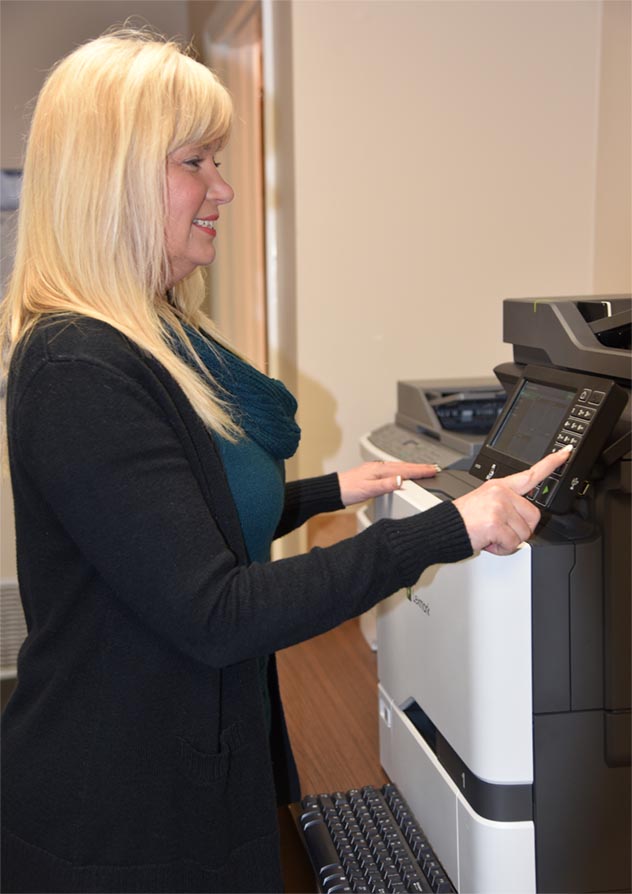
The Lexmark Accessibility CFT has external relationships with accessible design experts such as the Bluegrass Council of the Blind.
1 Click here to read accessibility conformance reports for Lexmark devices with accessibility features.